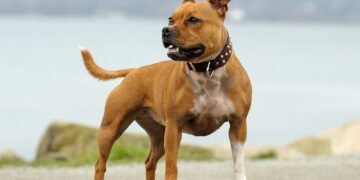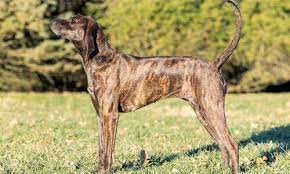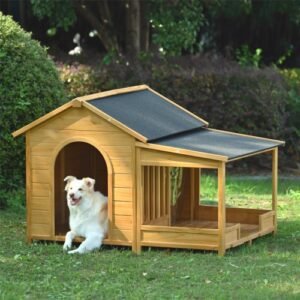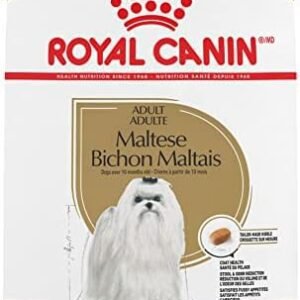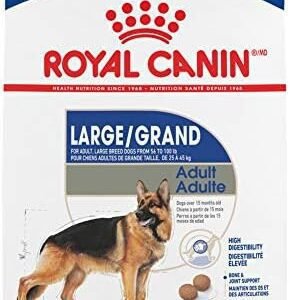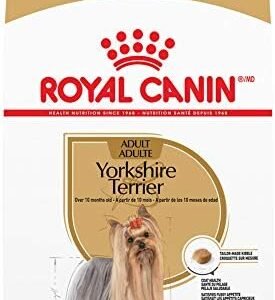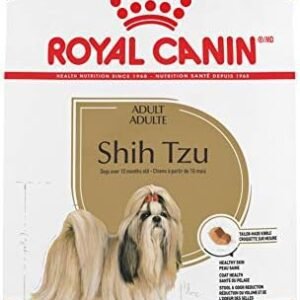Introduction
Greyhounds, often hailed as the aristocrats of the dog world, are a breed with a rich history and unique characteristics. These slender and graceful canines are known for their remarkable speed, gentle temperament, and distinctive appearance. In this comprehensive guide, we will delve into the dietary needs of the greyhound dog breed, shedding light on their origin, size, temperament, and common health concerns. Moreover, we will emphasize the crucial role that a well-balanced and appropriate diet plays in ensuring the health and well-being of these elegant companions.
Table of Contents
A Brief Glimpse into the World of Greyhounds
Originating in ancient Egypt, greyhounds have a storied history that spans thousands of years. They were initially bred for hunting, their remarkable speed making them exceptional at chasing down prey. Over time, they transitioned from hunters to beloved companions, adored for their gentle and affectionate nature.
Size and Physique: Greyhounds are known for their statuesque appearance. They are a large breed, with males typically standing between 28 to 30 inches tall at the shoulder and females measuring slightly smaller. Despite their impressive height, they possess a lean and athletic physique, characterized by a deep chest, long legs, and a slender waist.
Temperament: Greyhounds are often described as gentle giants. Their mild-mannered and friendly disposition makes them fantastic family pets. They are known for their calm and well-behaved nature, often coexisting peacefully with children and other pets.
Nurturing the Well-being of Greyhounds
While greyhounds may appear robust, they are not immune to health issues that can affect any dog breed. Understanding their dietary requirements is paramount to ensuring their health and longevity. A well-considered diet tailored to their specific needs can help prevent common health problems, such as bloat, heart issues, and joint ailments.
Factors to Consider When Choosing Food for Greyhound
When it comes to selecting the right food for your greyhound, there are several essential factors to consider. These factors play a pivotal role in ensuring that your greyhound receives the appropriate nutrition to support their unique size and activity level. In this section, we will explore the influence of size and activity on the dietary requirements of greyhounds and provide recommendations on suitable food products tailored to their needs.
Size and Activity Level
Greyhounds come in various sizes, and their activity levels can vary significantly depending on age, individual temperament, and lifestyle. Understanding these factors is crucial for determining the ideal calorie intake, macronutrient balance, and protein content in their diet.

Caloric Requirements
The size of your greyhound directly affects their daily caloric needs. Larger greyhounds naturally require more calories to sustain their energy levels and maintain a healthy weight. To determine the appropriate calorie intake for your greyhound, it’s essential to consult with your veterinarian, who can provide personalized recommendations based on their specific size and activity level.
Macronutrients
In addition to caloric intake, the balance of macronutrients in your greyhound’s diet is vital for their overall health. Greyhounds, like all dogs, require a mix of carbohydrates, fats, and proteins. However, their protein needs may differ from other breeds due to their lean physique and muscle mass.
Protein Content
Protein is a crucial component of a greyhound’s diet, as it supports muscle development and repair. High-quality animal-based protein sources are ideal for greyhounds. These can include lean meats like chicken, turkey, and beef. It’s important to choose dog food products that list a high-quality protein source as the first ingredient.
Examples of Suitable Food Products
Now that we’ve discussed the importance of size and activity level in determining dietary needs, let’s explore some examples of food products that are well-suited for greyhounds.
- High-Protein Dog Food: Greyhounds benefit from diets rich in protein, making high-protein dog food an excellent choice. Look for products with at least 20-30% protein content, preferably derived from animal sources.
- Large Breed Dog Food: If you have a larger greyhound, consider specialized large breed dog food. These formulas are designed to support the unique needs of bigger dogs, including joint health and controlled calorie levels to prevent excessive weight gain.
- Active Lifestyle Formulas: If your greyhound is particularly active or participates in agility, racing, or other strenuous activities, consider food formulated for active dogs. These formulas typically contain higher calorie levels to meet the energy demands of an active lifestyle.
- Age-Appropriate Food: As your greyhound ages, their dietary requirements may change. Senior dog food formulas cater to the needs of older dogs, providing joint support and potentially lower calorie content to prevent weight gain in less active seniors.
Remember that every greyhound is an individual, and what works best for one may not work for another. It’s essential to monitor your dog’s weight and adjust their diet as needed to maintain a healthy body condition. Consulting with your veterinarian for personalized dietary recommendations is always a wise choice.
Age and Life Stage

Greyhounds go through various life stages, each with its own set of nutritional needs. It’s crucial to tailor their diet to support their specific stage of life, whether they are puppies, adults, seniors, pregnant or lactating females, or dogs with special health considerations.
Puppies
Nutritional Needs: Greyhound puppies are in a rapid growth phase, and their diet should reflect this. They require a diet rich in calories, high-quality protein, and essential nutrients to support muscle and bone development.
Recommended Food Products: Puppy-specific Dog Food: Look for puppy-specific formulas that provide the right balance of nutrients for growing greyhounds. These formulas often contain higher levels of calcium and phosphorus for bone development.
Adults
Nutritional Needs: Adult greyhounds have different dietary needs compared to puppies. They require a balanced diet to maintain their lean physique and overall health.
Recommended Food Products: High-Quality Adult Dog Food: Choose adult dog food with a protein content of around 18-25%. Ensure that the first ingredient is a high-quality protein source like chicken, turkey, or fish.
Seniors
Nutritional Needs: As greyhounds age, their metabolism may slow down, and they may become less active. Senior greyhounds benefit from a diet that supports joint health and manages their weight.
Recommended Food Products: Senior Dog Food: Look for senior dog food formulas designed to support aging dogs. These formulas often contain joint-supporting ingredients like glucosamine and chondroitin.
Pregnant or Lactating Females
Nutritional Needs: Pregnant and lactating greyhound females require extra calories and nutrients to support the growth of their puppies and the demands of milk production.
Recommended Food Products: Puppy Food During Pregnancy: Transition to puppy-specific food during pregnancy to meet the increased calorie and nutrient requirements.
Special Health Considerations
In some cases, greyhounds may have specific health considerations that require special dietary choices. For example, if your greyhound has food allergies or sensitivities, you may need to opt for hypoallergenic dog food. Consult with your veterinarian for guidance in such situations.
General Tips for All Life Stages
- Consult with Your Veterinarian: It’s crucial to consult with your veterinarian to determine the best diet for your greyhound’s specific life stage and health needs.
- Portion Control: Regardless of life stage, monitor your greyhound’s weight and adjust their portion sizes as needed to prevent obesity.
- Fresh Water: Ensure your greyhound has access to fresh, clean water at all times.
Examples of Suitable Food Products
- Puppy Food Brands: Some reputable puppy food brands that cater to the needs of growing greyhounds include Blue Buffalo Life Protection Formula Puppy, Wellness Complete Health Puppy, and Royal Canin Breed Health Nutrition Greyhound Puppy.
- Adult Dog Food Brands: For adult greyhounds, consider options like Merrick Grain-Free Real Chicken and Sweet Potato, Nutro Ultra Adult Dry Dog Food, and Hill’s Science Diet Adult Dog Food.
- Senior Dog Food Brands: For senior greyhounds, explore products like Nutro Ultra Senior Dry Dog Food, Blue Buffalo Homestyle Recipe Senior Dog Food, and Wellness Complete Health Natural Senior Dog Food.
- Special Health Considerations: If your greyhound has specific health needs, discuss suitable food products with your veterinarian. Brands like Hill’s Prescription Diet and Royal Canin offer specialized formulas for various health conditions.
Understanding the nutritional requirements of greyhounds at different life stages is vital for their overall health and well-being. By choosing the right food products tailored to their age and life stage, you can ensure that your greyhound enjoys a long and healthy life. In the next section, we will delve into the importance of dietary supplements and treats in a greyhound’s diet.
- REAL CHICKEN FIRST: Blue Buffalo’s premium dog food features high quality deboned chicken as the primary ingredient; bro…
- HIGH QUALITY NATURAL FOOD: BLUE’s natural dry dog food is made with premium ingredients and contains no chicken or poult…
- THE PERFECT BALANCE OF FLAVOR AND NUTRITION: Formulated with essential proteins and carbs for energy needs and Omega-3 &…

- High quality protein for lean muscles
- Natural fibers for healthy digestion
- Omega-6s and vitamin E for beautiful skin & coat













- MEDIUM BREED DOG FOOD: Royal Canin Medium Breed Adult Dry Dog Food is precise nutrition specifically made for dogs 1–7 y…
- IMMUNE SUPPORT: A blend of prebiotics and antioxidants for dogs supports natural defenses for immune support
- SKIN AND COAT HEALTH: Optimal levels of EPA and DHA maintain healthy skin and a healthy dog coat













- Ultra Difference: Nutro Ultra Adult Small Breed High Protein Dry Dog Food provides high-quality ingredients like our tri…
- Designed for your Small Breed: This dry dog food is specifically tailored and designed for your small breed dog’s unique…
- High-quality Protein: With real chicken as the #1 ingredient and high-quality protein from chicken sources, this dry dog…













- USDA Certified Organic, Non-GMO Verified.
- Main ingredient is organic chicken! No wheat, corn, or soy!
- The perfect bite sized training treats made in small batches for freshness, quality, and safety!













Special Dietary Needs and Preferences
Health Conditions
Some greyhounds may have underlying health conditions that require dietary modifications. For example, if your greyhound has kidney disease, a diet with controlled phosphorus levels may be recommended to reduce stress on the kidneys. If your dog has diabetes, a diet with consistent carbohydrate levels may help regulate blood sugar.
Recommended Food Products: Prescription Diets: Consult your veterinarian, who may recommend prescription diets tailored to specific health conditions. Brands like Hill’s Prescription Diet and Royal Canin offer such specialized formulas.
Allergies and Sensitivities
Greyhounds, like any breed, can develop food allergies or sensitivities. Common allergens include ingredients like wheat, soy, and corn. If your greyhound experiences digestive issues, skin problems, or other allergic reactions, it’s essential to identify and eliminate the allergenic ingredients from their diet.
Recommended Food Products: Hypoallergenic Dog Food: Switch to hypoallergenic dog food brands that exclude common allergens. Some options include Blue Buffalo Basics Limited Ingredient Diet, Natural Balance L.I.D. Limited Ingredient Diets, and Hill’s Science Diet Sensitive Stomach & Skin.
- Fresh new look coming soon!
- This adult dry dog food promotes digestive health while nourishing skin
- A source of prebiotic fiber to support a balanced gut microbiome in your grown dog













- SALMON IS THE FIRST ANIMAL PROTEIN SOURCE providing essential protein and amino acids to help maintain strong muscles; S…
- WITH SENSITIVE PETS IN MIND we’ve carefully chosen a simplified list of premium ingredients to help support a healthy co…
- NUTRIENTS FROM OUR SALMON & SWEET POTATO RECIPE crafted with nutritious ingredients such as sweet potatoes and flaxseed;…













- Oat meal is easily digestible and gentle on the digestive system
- High protein formula, with real salmon as the first ingredient
- Fortified with guaranteed live probiotics for digestive and immune health













- Oat meal is easily digestible and gentle on the digestive system
- High protein formula, with real salmon as the first ingredient
- Fortified with guaranteed live probiotics for digestive and immune health













Personal Tastes
Greyhounds, like humans, have individual tastes and preferences when it comes to food. Some may prefer kibble, while others might enjoy wet food or a combination of both. Pay attention to your greyhound’s preferences and choose foods that align with their tastes.
Recommended Food Products: Variety in the Diet: Offer a variety of dog food textures and flavors to cater to your greyhound’s personal tastes. Brands like Nutro Ultra Grain-Free Paté, Merrick Grain-Free Canned Dog Food, and Wellness CORE Grain-Free Wet Dog Food provide options to diversify their meals.
- Contains twenty-four (24) 3.5 oz. trays of NUTRO ULTRA Adult Grain Free Soft Wet Dog Food, Trio of Proteins Chicken, Lam…
- Real chicken is the #1 ingredient in this delicious soft paté, finished off with lamb, whitefish, and a vibrant medley o…
- Made with high-quality, real ingredients sourced from a trusted network of farmers and suppliers













- Merrick Premium Grain Free Dry Dog Food, Real Chicken And Sweet Potato Recipe. Wholesome And Natural With Added Vitamins…
- Real deboned chicken is always the first ingredient in this premium grain free kibble, made with real food ingredients t…
- Chicken dog food features a holistic blend of 57% protein and healthy fat ingredients to maintain lean muscle mass and e…













- GRAIN-FREE SENIOR DRY DOG FOOD: Premium protein from responsibly sourced turkey is expertly balanced with nutrient rich …
- SUPPORTS HIP & JOINT HEALTH AND HEALTHY HEART: Guaranteed levels of glucosamine for strong joints, antioxidants support …
- ALL NATURAL: Created by nutritionists, veterinarians and animal lovers, our recipes provide an ideal balance of nature’s…













Homemade and Raw Diets
Some greyhound owners opt for homemade or raw diets. These diets can be tailored to meet specific preferences and dietary needs but should be formulated with care to ensure balanced nutrition.
Recommended Food Products: Consult a Canine Nutritionist: If you choose to prepare homemade or raw meals for your greyhound, consider consulting a canine nutritionist to ensure they receive the proper nutrients.
It’s important to note that while accommodating special dietary needs and preferences is essential, it’s equally crucial to maintain a balanced diet that meets your greyhound’s nutritional requirements. Consult with your veterinarian before making significant dietary changes, especially if your greyhound has health concerns or dietary restrictions.
Tips and Recommendations on Feeding Greyhound
In this section, we will provide valuable tips and recommendations on how to properly feed your greyhound. A well-structured feeding plan is essential to ensure that your greyhound receives the right amount of nutrition to maintain their health and vitality. We’ll explore how to determine the appropriate amount and frequency of feeding based on factors such as weight, age, activity level, and food type. Additionally, we will offer general guidelines and a helpful table to estimate the ideal feeding regimen for your greyhound.
How Much and How Often to Feed Greyhound
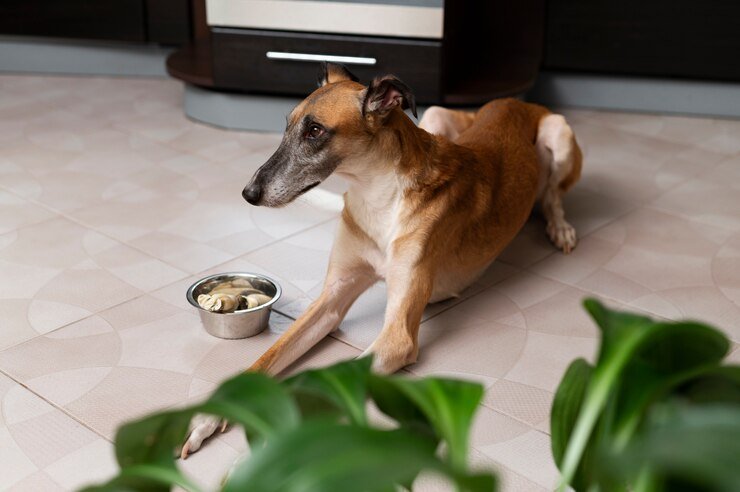

Determining the Appropriate Amount
The amount of food your greyhound requires can vary significantly depending on several factors, including:
- Weight: Larger greyhounds generally require more food than smaller ones.
- Age: Puppies and younger dogs typically need more calories than adults, while seniors may require less.
- Activity Level: Highly active greyhounds will need more calories than sedentary ones.
- Food Type: The calorie density of the food you choose will affect portion size.
To determine the appropriate daily calorie intake for your greyhound, you can use the following formula:
Daily Calories = (Maintenance Energy Requirement) x (Life Stage and Activity Level Factors)
- Maintenance Energy Requirement (MER) is the number of calories required to maintain a healthy body weight.
- Life Stage and Activity Level Factors are multipliers that adjust calorie requirements based on age and activity.
General Guidelines for Feeding Greyhounds
Here are some general guidelines on how much and how often to feed greyhounds based on their life stage and activity level:
Puppies (2-6 Months):
- Feed 4 meals a day.
- Divide daily calories into these meals.
- Monitor weight to adjust portions as your puppy grows.
Puppies (6 Months – 1 Year):
- Transition to 2-3 meals a day.
- Continue monitoring weight and adjusting portions.
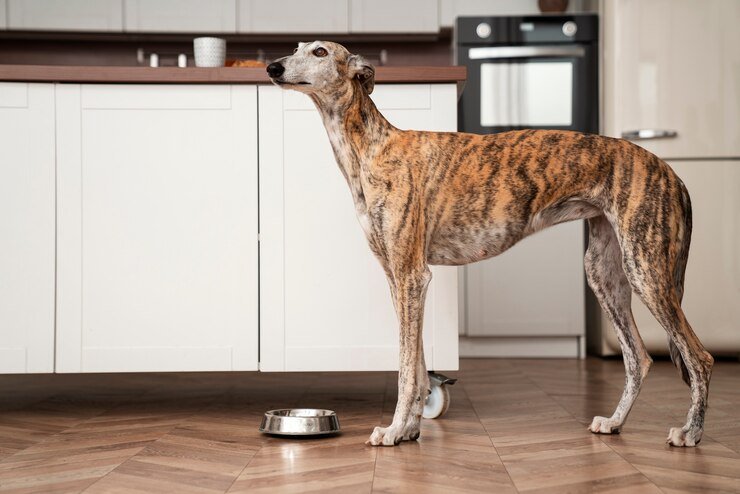

Adults (1 Year – 7 Years):
- Typically fed twice a day.
- Portion sizes depend on weight and activity level.
- A rough estimate for dry dog food is 1.5 to 2.5 cups per day, divided into two meals.
Seniors (7 Years and Older):
- Continue feeding twice a day.
- Adjust portions to maintain a healthy weight.
- Some seniors may benefit from specialized senior dog food formulas.
Feeding Table for Greyhounds
Use the table below as a rough estimate of how much to feed your greyhound based on their weight and food type. Remember that individual needs may vary, so monitor your dog’s weight and adjust portions accordingly.
| Greyhound Weight (lbs) | Dry Food (cups/day) | Wet Food (cans/day) |
|---|---|---|
| 40 – 50 | 2.5 – 3 | 0.5 – 0.75 |
| 51 – 60 | 3 – 3.5 | 0.75 – 1 |
| 61 – 70 | 3.5 – 4 | 1 – 1.25 |
| 71 – 80 | 4 – 4.5 | 1.25 – 1.5 |
| 81 – 90 | 4.5 – 5 | 1.5 – 1.75 |
| 91 – 100 | 5 – 5.5 | 1.75 – 2 |
| 101 – 110 | 5.5 – 6 | 2 – 2.25 |
| 111 – 120 | 6 – 6.5 | 2.25 – 2.5 |
Note: These are rough estimates. Consult with your veterinarian for personalized feeding recommendations.
It’s crucial to remember that these are general guidelines, and individual greyhounds may have unique needs. Monitor your dog’s weight and body condition regularly, adjusting portion sizes as needed to maintain a healthy weight. If you have any concerns about your greyhound’s diet or weight, consult with your veterinarian for tailored guidance.
What to Avoid Feeding Greyhound
Ensuring that your greyhound receives a nutritious and safe diet involves not only selecting the right foods but also being aware of what to avoid. Some foods and ingredients can be harmful or even toxic to greyhounds. In this subsection, we will discuss these potential hazards, helping you make informed choices about what to keep out of your greyhound’s diet.
Foods and Ingredients to Avoid
- Chocolate: Chocolate contains theobromine and caffeine, which are toxic to dogs. Dark chocolate and cocoa powder have higher theobromine content and are particularly dangerous. Keep all forms of chocolate out of your greyhound’s reach.
- Grapes and Raisins: These seemingly harmless fruits can lead to kidney failure in dogs, and even a small amount can be toxic. Avoid feeding your greyhound grapes or raisins and be cautious with foods containing them.
- Xylitol: This artificial sweetener, often found in sugar-free gum, candy, and some peanut butter brands, can cause a rapid release of insulin in dogs, leading to hypoglycemia (low blood sugar) and other serious health issues. Check labels for xylitol and keep these products away from your greyhound.
- Onions and Garlic: Onions and garlic, whether raw, cooked, or powdered, can damage a dog’s red blood cells, leading to anemia. Avoid giving your greyhound any foods seasoned with these ingredients.
- Alcohol: Alcohol consumption can have severe effects on dogs, including intoxication, seizures, and even death. Keep alcoholic beverages well out of reach.
- Bones: Cooked bones, such as those from poultry, can splinter and pose choking hazards or cause internal injuries. Stick to safe, commercial dog chews and treats.
- Macadamia Nuts: Macadamia nuts can cause weakness, vomiting, and tremors in dogs. Avoid sharing snacks that contain these nuts.
- Avocado: Avocado contains a substance called persin, which can be toxic to dogs in large quantities. While small amounts may not be harmful, it’s best to avoid feeding avocado to your greyhound.
Tips for Preventing Ingestion of Harmful Foods or Substances
- Keep Human Food Out of Reach: Greyhounds are known for their agility and ability to reach high surfaces. Store human food securely on counters and in cabinets to prevent your greyhound from helping themselves to a dangerous snack.
- Secure Trash Cans: Dogs are notorious scavengers, and trash cans can be tempting sources of harmful leftovers. Invest in trash cans with secure lids or keep them in a cabinet or pantry.
- Be Cautious with Plants: Some household plants, such as poinsettias, philodendrons, and lilies, can be toxic to dogs if ingested. Ensure that your greyhound cannot access these plants.
- Educate Family and Guests: Inform family members and guests about what foods are off-limits for your greyhound. Sometimes well-meaning visitors may offer a snack that’s harmful to dogs.
- Emergency Preparedness: In case of accidental ingestion of toxic substances, have the contact information for your veterinarian and a pet poison helpline readily available. Acting quickly can be crucial in emergencies.
By being vigilant and aware of potential hazards, you can help protect your greyhound from accidental ingestion of harmful foods or substances. Regularly inspect your living spaces for any potential dangers and create a safe environment for your beloved pet.
In the next section, we will provide recommendations for some of the best food products available for greyhounds, ensuring that you make the right choices to meet their nutritional needs and preferences.
How to Monitor and Adjust the Diet of Greyhound
Maintaining the health and well-being of your greyhound requires vigilant monitoring of their diet. Regular assessment ensures they receive adequate nutrition while preventing issues like obesity or undernourishment. In this subsection, we will discuss how to effectively monitor your greyhound’s health and weight, along with tips on how to adjust their diet if needed.
Regular Health and Weight Monitoring
- Weight Check: Regularly weigh your greyhound using a reliable scale. Keep a record of their weight to detect any significant fluctuations. A sudden drop or increase in weight may indicate a health issue.
- Body Condition Score: Use a body condition scoring system recommended by your veterinarian. This system assesses your dog’s body fat and muscle mass. Aim for a score that falls within the healthy range.
- Physical Examination: Conduct regular physical examinations at home. Check for any signs of discomfort, pain, or unusual lumps and bumps. Keep an eye on your greyhound’s coat condition and skin health.
- Behavior and Activity: Pay attention to changes in your greyhound’s behavior and activity level. Sudden lethargy or excessive panting can be signs of underlying issues.
Tips for Adjusting Your Greyhound’s Diet
- Consult Your Veterinarian: If you notice any significant changes in your greyhound’s weight, appetite, or behavior, consult your veterinarian promptly. They can assess your dog’s overall health and provide guidance on dietary adjustments.
- Adjust Portion Sizes: If your greyhound is gaining weight, consider reducing their daily portion size. Conversely, if they are losing weight or appear undernourished, increase their portion sizes.
- Switch to a Different Food Product: Changing to a different dog food brand or formula may be necessary to address specific dietary needs or preferences. Consult your vet for recommendations on suitable options.
- Add Supplements: Depending on your greyhound’s age and health, they may benefit from supplements such as omega-3 fatty acids for skin and coat health or glucosamine and chondroitin for joint support. Always consult with your veterinarian before adding supplements to your dog’s diet.
- Adjust Treats: Be mindful of the treats you offer your greyhound. High-calorie treats can contribute to weight gain. Opt for healthy, low-calorie options or break treats into smaller pieces.
- Consider Specialized Diets: In cases of specific health conditions, your veterinarian may recommend a specialized diet tailored to your greyhound’s needs. These diets can help manage health issues such as allergies, kidney disease, or diabetes.
- Monitor Changes Carefully: When adjusting your greyhound’s diet, do so gradually to avoid gastrointestinal upset. Make small changes over several days to allow their digestive system to adapt.
- Regular Follow-ups: After making dietary adjustments, continue to monitor your greyhound’s health and weight regularly. Track any changes and discuss them with your veterinarian during follow-up visits.
Remember that maintaining a healthy diet for your greyhound is an ongoing process. Regular monitoring and adjustments are essential to ensure that your furry friend receives the appropriate nutrition throughout their life.
By staying attentive to your greyhound’s needs and partnering with your veterinarian, you can provide a diet that promotes their overall health and happiness. In the final section of this article, we will recap the essential points discussed and emphasize the significance of following these guidelines to support your greyhound’s dietary needs.
FAQs about dietary preferences and feeding guidelines for the Greyhound dog breed:
Q1: Can I feed my Greyhound a vegetarian or vegan diet?
A: While it’s possible to provide a vegetarian or vegan diet for your Greyhound, it’s essential to consult with a veterinarian or canine nutritionist to ensure they receive all essential nutrients.
Q2: Are there breed-specific dietary preferences unique to Greyhounds?
A: Greyhounds, like other breeds, have individual tastes. Some Greyhounds may prefer certain flavors or textures, but there are no breed-specific dietary preferences.
Q3: How can I prevent my Greyhound from eating too quickly?
A: To prevent rapid eating, consider using slow-feed dog bowls or puzzle feeders. These tools can help slow down your Greyhound’s eating pace.
Q4: Is it okay to feed my Greyhound raw food or a homemade diet?
A: Feeding raw or homemade diets can be a choice for Greyhounds, but it’s crucial to work with a veterinarian or nutritionist to ensure the diet meets their nutritional needs.
Q5: Can I feed my Greyhound a grain-free diet?
A: Grain-free diets have been associated with heart issues in some dogs. It’s generally best to choose a high-quality dog food with grains or consult your vet for grain-free options if your Greyhound has specific dietary requirements.
Q6: Should I feed my Greyhound at specific times each day?
A: Establishing a consistent feeding schedule can help regulate your Greyhound’s appetite and digestion. Most Greyhounds do well with meals given at the same times each day.
Q7: Are there any supplements that are particularly beneficial for Greyhounds?
A: Greyhounds may benefit from joint supplements like glucosamine and chondroitin to support their slender frames. Consult with your vet for personalized supplement recommendations.
Q8: Can I feed my Greyhound a rawhide chew?
A: Rawhide chews can be a choking hazard for Greyhounds. It’s safer to opt for alternative chew toys or treats designed for dental health.
Q9: How do I know if my Greyhound is overweight or underweight?
A: You can assess your Greyhound’s body condition by observing their ribcage and overall physique. Consult a body condition scoring chart or your veterinarian for guidance.
Q10: What should I do if my Greyhound is a picky eater?
A: If your Greyhound is a picky eater, try offering a variety of dog food textures and flavors. Avoid giving in to table scraps, as this can reinforce picky eating habits. If the issue persists, consult with your vet to rule out underlying health problems.
Conclusion
In this comprehensive guide, we’ve explored the critical aspects of providing a balanced and appropriate diet for your Greyhound. From understanding the factors that influence their dietary needs to offering tips and recommendations on feeding, we’ve covered it all to ensure your Greyhound thrives on a nourishing diet.
We began by discussing the significance of considering factors like size, activity level, age, and specific dietary preferences when choosing the right food for your Greyhound. Whether you have a sprightly puppy, an active adult, or a wise senior, tailoring their diet to their life stage and activity level is essential.
We delved into the importance of addressing special dietary needs, including health conditions, allergies, sensitivities, and personal tastes. By being aware of potential dietary challenges and choosing suitable food products, you can ensure your Greyhound’s well-being.
Additionally, we explored how to monitor and adjust your Greyhound’s diet to maintain their health and weight effectively. Regular health and weight checks, along with consulting your veterinarian, are key to providing the best nutrition for your Greyhound at all stages of life.
In conclusion, providing a balanced and appropriate diet for your Greyhound is the cornerstone of their health and well-being. It’s not just about keeping them well-fed but also about ensuring they receive the right nutrients tailored to their unique needs. By adhering to the guidelines and recommendations presented in this article, you can help your Greyhound lead a long, healthy, and happy life.
Remember that the well-being of your Greyhound is an ongoing commitment. Stay informed, consult with your veterinarian when needed, and keep exploring the latest advancements in canine nutrition to ensure your furry friend’s nutritional needs are met.
For further reading and research on Greyhound nutrition or food reviews, consider reputable sources such as veterinary websites, breed-specific forums, and canine nutrition books. Your Greyhound’s health is a top priority, and your dedication to providing them with the best possible diet is a testament to your love and care for your loyal companion.


